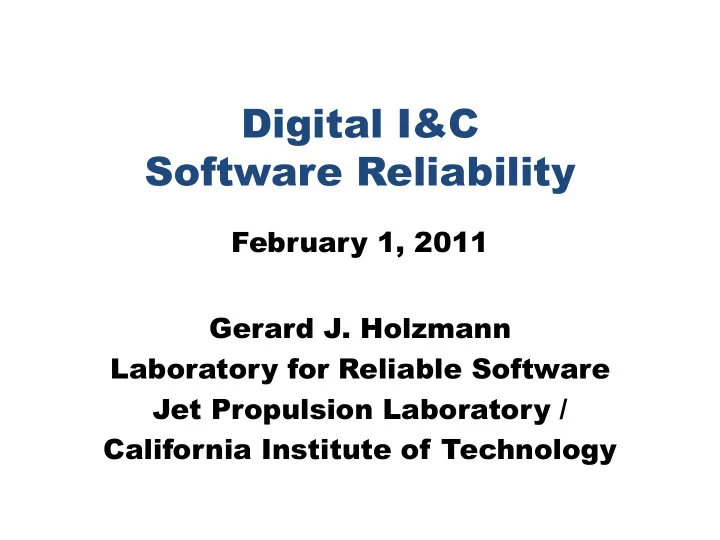

Digital I&C Software Reliability February 1, 2011 Gerard J. Holzmann Laboratory for Reliable Software Jet Propulsion Laboratory / California Institute of Technology
Background • Software controls are ubiquitous and have reached safety-critical systems • Code size & complexity is rapidly growing (often exponentially fast) • Software test and verification methods have not kept pace – meaning: virtually all software will have latent defects 2
Systems • Software is a system component – no one system component should be assumed to be perfect • Building reliable systems from unreliable components requires special precautions – for software this includes self- checking code, strict partitioning, design diversity ( defense-in-depth ), and independent, non-software backup 3
Failures : common causes • Software failures often follow a common pattern – many of these common causes can be prevented with the use of risk- based coding standards and strong compliance checkers 4
Failures : unintended coupling • Software failures in complex systems are often caused by unintended coupling between (assumed to be) independent system components – many of these causes can be prevented with the use of model- based design verification techniques 5
Failures : race conditions • Software failures are often caused by concurrency (race conditions) – many of these failures can be prevented with the use of model- based design verification techniques 6
Evidence for safety • Safety claims must include strong evidence with all relevant assumptions made explicit – this includes evidence of standards used, compliance verification and design verification techniques used, use of source code analysis , and formal design and code verification methods 7
Recommend
More recommend